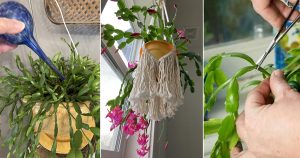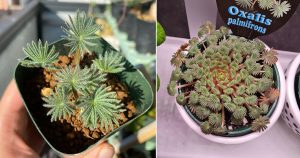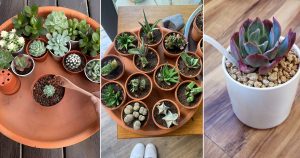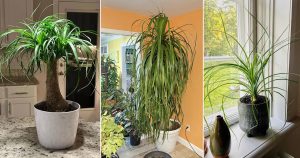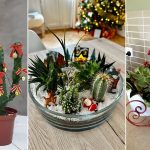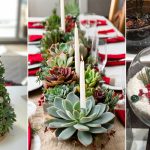Love the variety of cacti that have crowns on the top? You must check out this all-in-one guide on Euphorbia guillauminiana!
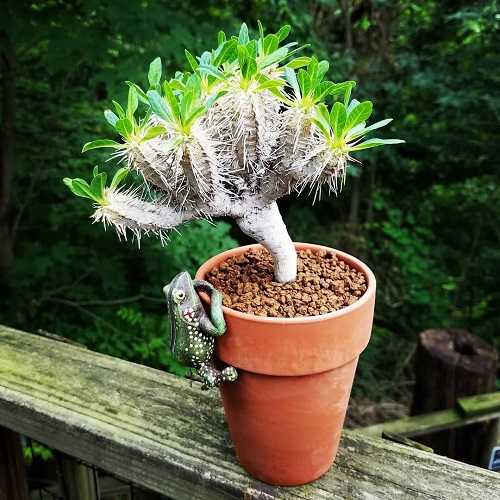
Popular by names like Madagascar Jewel or Guillaumin’s spurge, this Euphorbia variety is exceptional. And if you’re new to growing succulents, this easy care guide will help you get started on the right foot.
Euphorbia guillauminiana—Key Facts
| Botanical Name | Euphorbia guillauminiana |
| Common Names | Guillaumin’s spurge, Madagascar Jewel |
| Bloom Season | Spring to early summer |
| Dormancy | Winter; semi-dormant in summer |
| Flower Color | Yellow-green cyathia |
| Growth Rate | Slow-growing |
| USDA Zones | 9b- 11 |
| Mature Size | 6 to 12 inches |
| Sun Exposure | Full sun to light shade |
| Watering | Low water needs |
| Pests | Mealybugs, Spider mites, and Scale insects |
Toxicity Note: Like most Euphorbias, it produces a milky sap that can irritate skin and is toxic if ingested. Keep away from pets and children.
Euphorbia guillauminiana Information
If you’re into bonsai, this compact semi-succulent will win your heart. Its woody branches form a crown-like canopy, and the small, oval leaves at the tips give it the feel of a mini palm tree.
Besides the interesting appearance, it is worth mentioning that Euphorbias are quite easy to care for, too! Though initially they do need a bit of pampering, they grow up to be quite self-sufficient (like kids growing up!). They even produce flowers in colors like yellow-green and, occasionally, a rare surprise of red.
The plant sometimes drops its leaves in summer when semi-dormant, but don’t worry—it’s just resetting and will bounce back with new growth.
Euphorbia guillauminiana Propagation
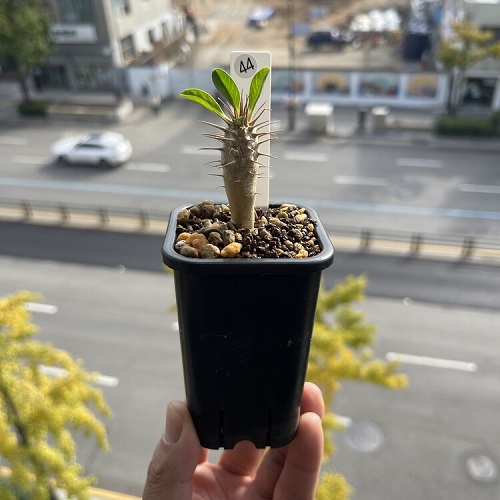
If the description itself has already made you want to grow this succulent, you are in for a treat! You can propagate this beauty through seeds or woody stem cuttings. Just make sure the cutting comes from mature branches.
Wear gloves while handling it—the sap can sting. Rinse cuttings under warm water to wash off latex, let them callous for 2–3 days, then plant in a sandy, moist mix. You’ll usually see roots in a month—faster if you dip the cut end in rooting hormone.
Heads up: Seed propagation isn’t common. The plant isn’t very self-fertile, and it doesn’t produce many seeds anyway.
Euphorbia guillauminiana Growing Requirements
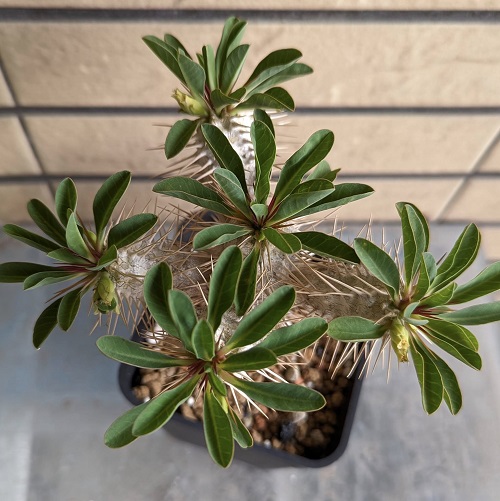
Sunlight
Give it bright morning sun and afternoon shade—just like a beachgoer who tans in the morning but needs a break by noon. Indoors, a south-facing window with sheer curtains works great.
Gradually increase sun exposure if moving it outdoors to prevent sunburn. And if it starts stretching or dropping leaves, it’s craving more light.
Soil
This plant loves gritty, well-draining soil. It can be sandy or rocky mixed with a slightly acidic to neutral pH (6.0 to 7.0). Add pumice or perlite for extra airflow, especially if your mix holds too much moisture.
Wet feet are a big no-no. Always go for drainage over density.
Watering
Forget strict schedules—the Madagascar Jewel drinks on its own terms. During spring and summer, water more often. In winter, cut back.
Check the soil with your finger. If the top 2 inches are dry, it’s time to water. If not, wait. Always look for yellowing leaves or smelly, mushy brown roots, as these can be signs of root rot. If you notice leaf drop or wilting, you might be underwatering, and you should give your plant a drink more often.
Temperature
Euphorbia guillauminiana thrives between 65–80°F (18–27°C). While it can handle a mild chill down to 53°F (12°C), it hates frost. Keep it cozy during cooler nights, ideally around 60°F (15°C), to encourage blooms.
Avoid sudden temperature changes, especially during spring and fall, as this plant likes consistency.
Euphorbia guillauminiana Care
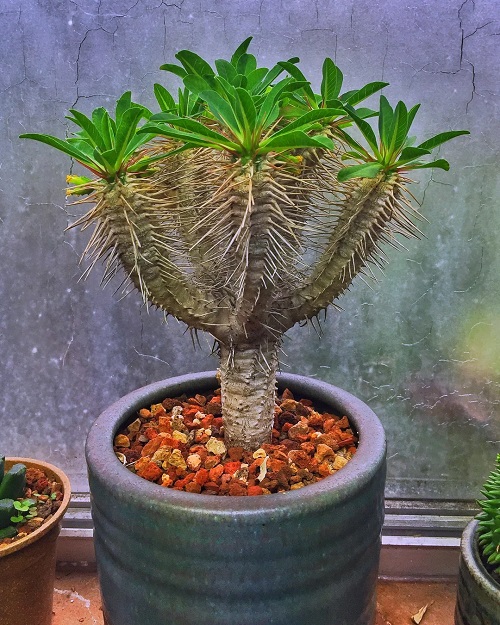
Fertilizer
For most plants and succulents, you will need to opt for fertilizers with balanced NPK ratios. As you know, these three nutrients are crucial for good plant health.
Of course, you must only apply them during spring and summer, following the manufacturer’s instructions, especially for dilution.
Pests and Diseases
Euphorbia is not the most pest-resistant of all succulents, so you might see a fair share of aphids and mealybugs on your plant. Look for sticky residue or cottony patches under leaves or branch joints.
For pest control, you can use both organic and chemical methods, such as neem oil or insecticidal soap. If needed, you can go for chemical pesticides, which pack a stronger punch. Most importantly, always follow the instructions carefully to protect your plants and the environment.
And that’s all about the care and growing tips that you need to know for this Euphorbia species. Follow these, and let us know about your growing journey in the comments below!

